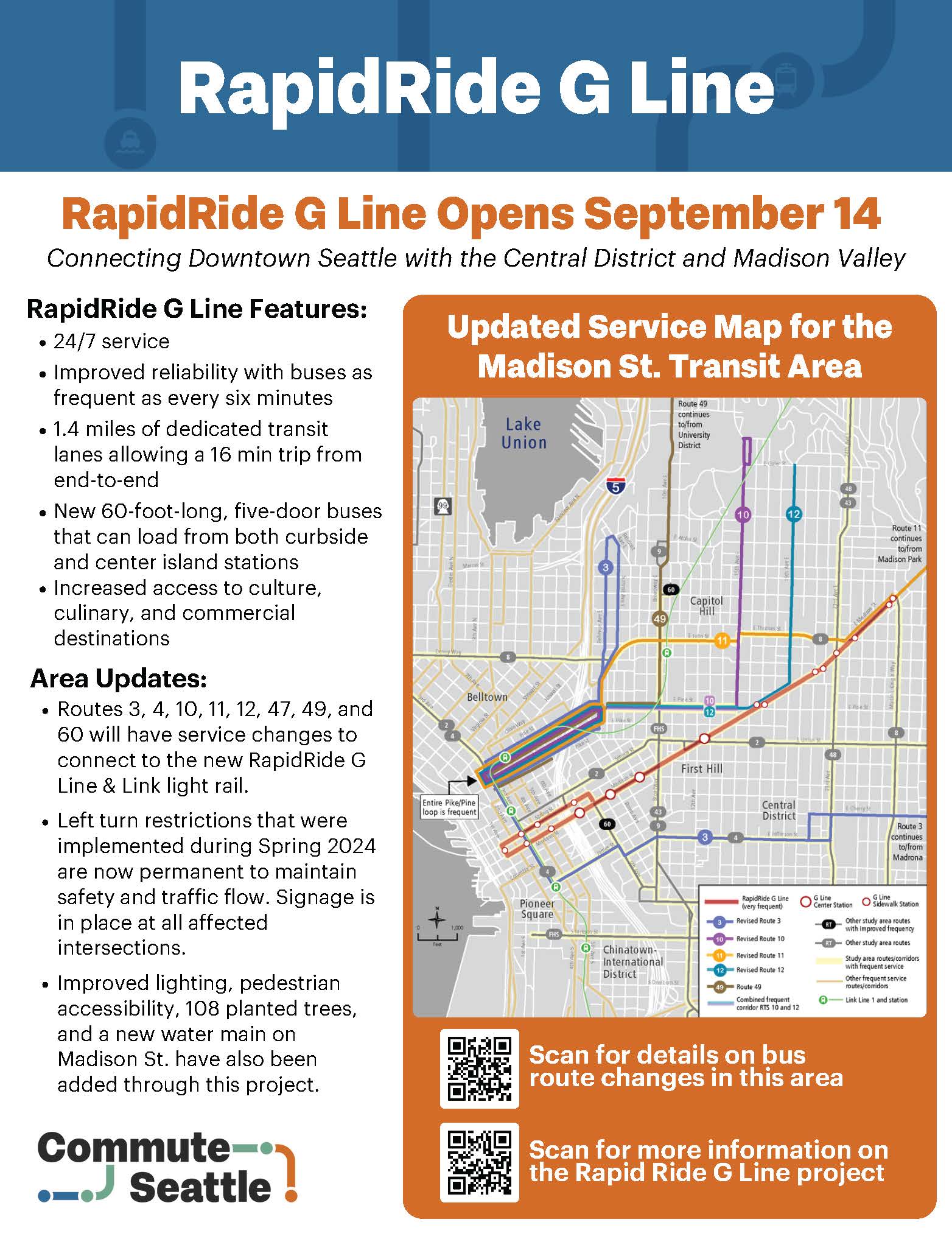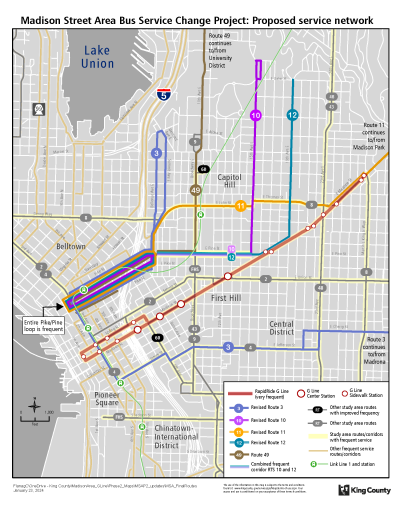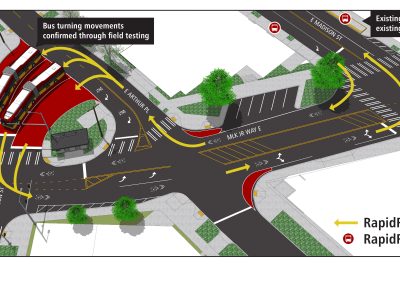Opening September 14, the RapidRide G Line will connect Downtown Seattle with the Central District and Madison Valley, bringing riders closer to many cultural, culinary, and commercial destinations! With 1.4 miles of dedicated transit lanes, this new bus-rapid transit line will operate 24/7 and run once every six minutes during the day. It will be serviced by new five-door, 60-foot-long buses that can load from both curbside and center island stations. In addition to these improvements focused on frequency and reliability, this project has improved accessibility in some of Seattle’s busiest neighborhoods by adding new curb ramps, crosswalks, and sidewalks to make it easier for people to access transit options, encouraging wider use of public transportation and creating a more environmentally sustainable community.
RapidRide G Line Quick Facts:
- Opens September 14
- Operates 24/7
- Runs as frequently as every 6 minutes during daytime hours (except Sunday)
- 16-minute ride during peak times from Madison Valley (28th Ave E & E Madison St) to Downtown (1st Ave & Madison St), and as fast as 12 minutes off-peak
- Four center stations on Madison St at 8th Ave, Terry Ave, Boylston Ave, and 12th Ave
Frequency & Service Schedules
RapidRide G Line Frequency Table:

Infrastructure Improvements
The RapidRide G Line – Madison St project brings many related infrastructure improvements along the RapidRide G Line corridor including:
- 3.8 miles of new/replaced sidewalk
- 9.1 lane-miles of concrete roadway
- 2.3 lane-miles of new asphalt overlay
- 1.4 miles of dedicated transit lanes
- 21 new RapidRide stops; 10 paired stops in each direction and one on First Avenue
- 2 upgraded bus stops
- 4 new bus-center islands
- 5 new signals and 36 upgraded signals
- 108 newly planted trees (some final tree planting is taking place this fall)
- Replaced a 120-year-old water main
- Improved drainage and wastewater system on Madison
- Improvements to Seattle City Light’s power distribution system
Route Changes
Routes in the area that are affected by the RapidRide G line are the 3, 4, 10, 11, 12, 47, 49, and 60.
Left Turn Restrictions
The left turn restrictions along Madison Ave that were implemented earlier this spring are now permanent. These restrictions are necessary to maintain safety and traffic flow when RapidRide G Line service begins. Signage is currently in place for drivers where left turns are prohibited.
RapidRide G Line Layover Facility
As part of the RapidRide G Line project, the Seattle Department of Transportation worked with King County Metro to build a new layover facility at the triangle intersection of E. Arthur Place, E. Harrison Street and Martin Luther King, Jr Way E.
This new layover facility will:
- Provide a safe location for King County Metro bus operators to park buses and take their mandated rest breaks.
- Have three spaces for buses to layover.
- Be available to operators 24 hours a day / 7 days a week.
- Closed to the public and transit riders.
- Keep parked buses out of the flow of traffic.
- Help improve traffic flow with new roadway changes and traffic signals.
Project History & Partners
Planning for the RapidRide G Line – Madison St project started in 2012 as part of the Seattle Transit Master Plan, with construction beginning in late 2021. The Seattle Department of Transportation (SDOT) led the project in partnership with King County Metro, which managed the procurement of new buses and will operate the new RapidRide G Line. Community input, federal funding from the Federal Transit Administration, support from President Biden’s American Rescue Plan, and funding from Sound Transit, along with additional support and partnership from Seattle City Light and Seattle Public Utilities were crucial in making this project a reality.
How We Can Help
We can help your business craft customized commute solutions. We offer free consulting services to any business in Downtown Seattle. Services include but are not limited to employee surveys, policy crafting, implementation, management tools and educational seminars.
Connect with a Specialist
Please pass a row id or name
Please pass a row id or name
Please pass a row id or name



